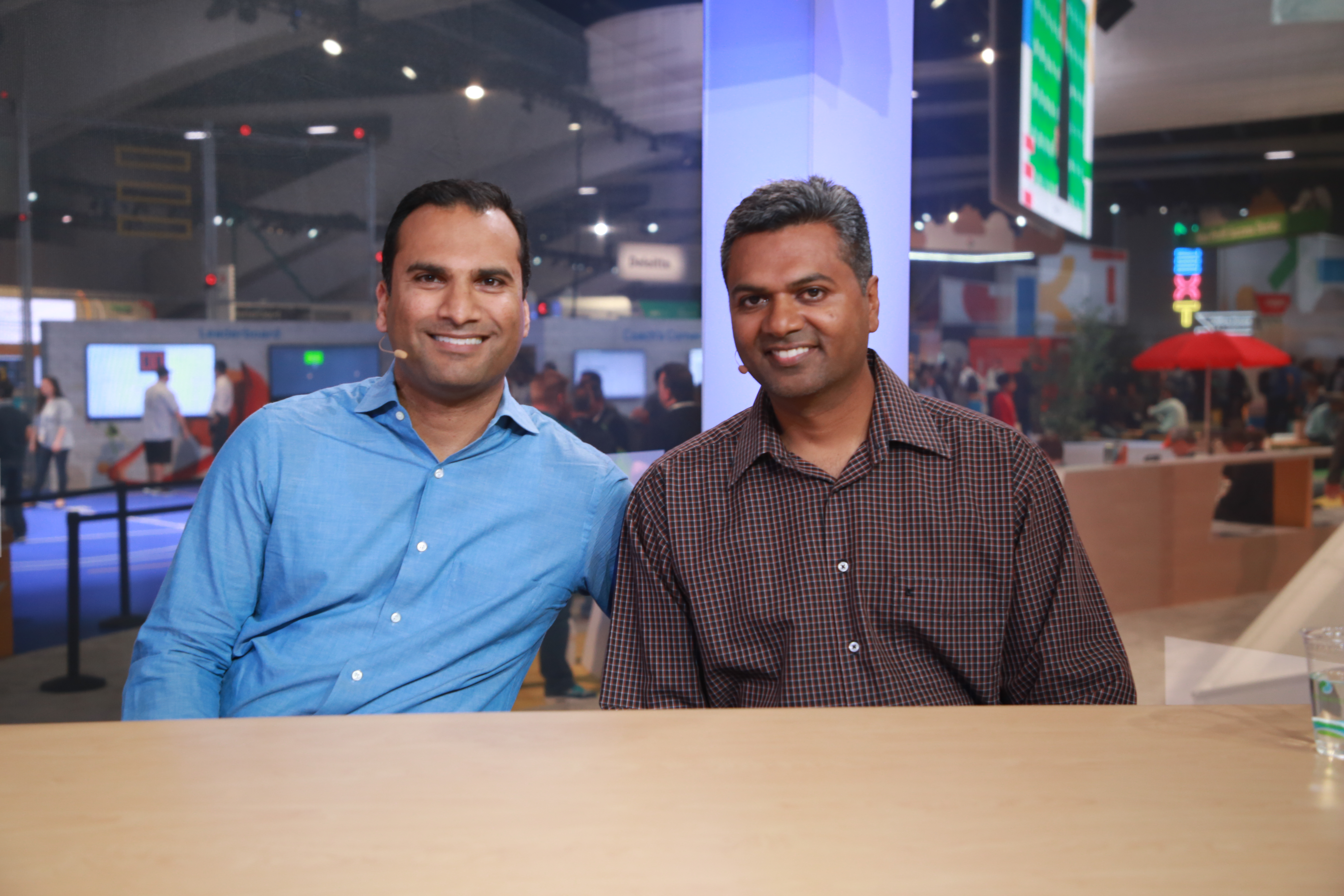 APPS
APPS
 APPS
APPS
 APPS
APPS
Not every company has the safety net to move fast and break stuff like Facebook. But they badly want to move fast with agile software deployment; can they do so and merely shake, scratch or scuff their stuff, then return it to like-new condition? A startup whose chief architect is none other than a Facebook Inc. alumnus says, they can.
Many companies are straining to grow into new agile developer operations protocols, according to Karthik Rau (pictured, left), founder and chief executive officer of SignalFx Inc. “Everything that they’ve designed is around having process and structure to check and make sure everything it’s clean before they push changes out,” he said. “And now we’re in this world where, you know, an intern or a developer can push directly on to production.”
The solution, oddly, is not to hire a full-time psychic to predict the performance of new deployments. It is rather a simple, reliable “undo button” at the ready should anything go wrong.
Rau and SignalFX Chief Architect Rajesh Raman (pictured, right) spoke with John Furrier (@furrier), host of theCUBE, SiliconANGLE Media’s mobile livestreaming studio, during the recently concluded Google Cloud Next event in San Francisco. They discussed how visibility can make distributed IT systems and DevOps release cycles manageable. (* Disclosure below.)
The complexity of today’s information technology systems is a lot to get one’s arms around. “We went from having physical machines that live for three years in a data center … divide it up into [virtual machines] 10 years ago, now divided up into containers for every process,” Rau said, noting the current trend for even more effective isolation and deployment of software through containerization.
The number of components in every spin-up, spin-down churn is massive. “That in and of itself requires a far more analytics-based approach to understand patterns rather than what’s happening on an individual component,” Rau said. SignalFX leverages analytics to observe systems with tons of components and allows users to easily roll back a bad deployment, he explained.
Continuous integration/continuous deployment, or CICD, underlies the whole business of pushing code at warp speed, according to Raman. “The thing that makes that possible is for you to have observability into what’s happening while that push happens because it’s one thing to push very fast; it’s another thing to recognize that you might have pushed something bad and to be able to revert it very quickly too,” he said. “So I think observability is a very key aspect of this entire CICD story.”
Watch the complete video interview below, and be sure to check out more of SiliconANGLE’s and theCUBE’s coverage of the Google Cloud Next event. (* Disclosure: SignalFX Inc. sponsored this segment of theCUBE. Neither SignalFX nor other sponsors have editorial control over content on theCUBE or SiliconANGLE.)
THANK YOU